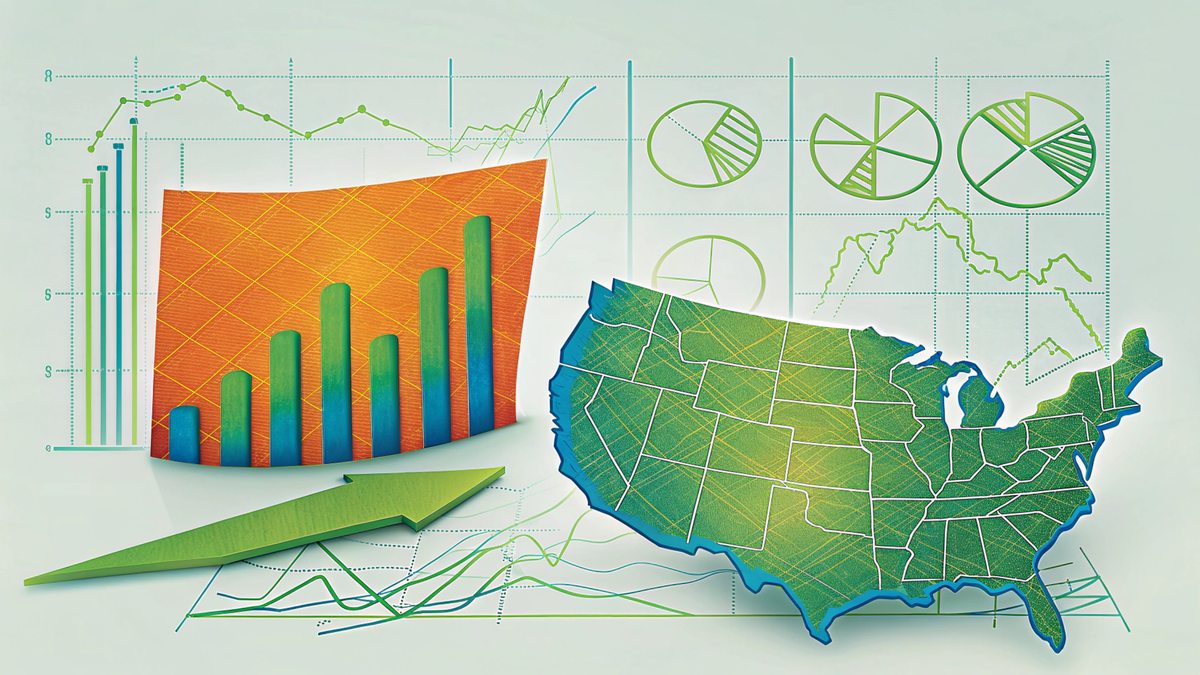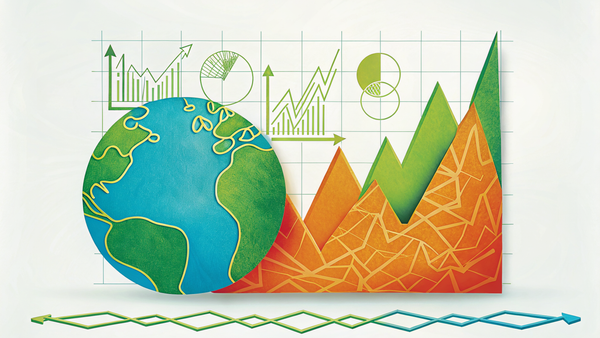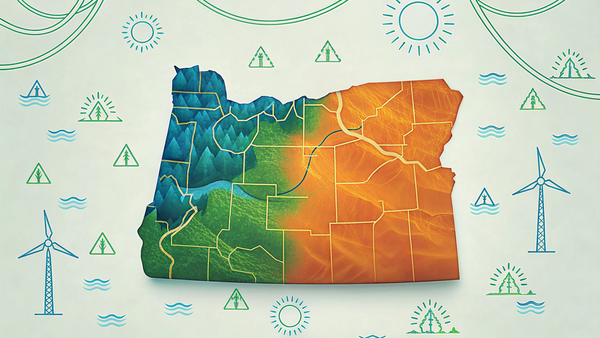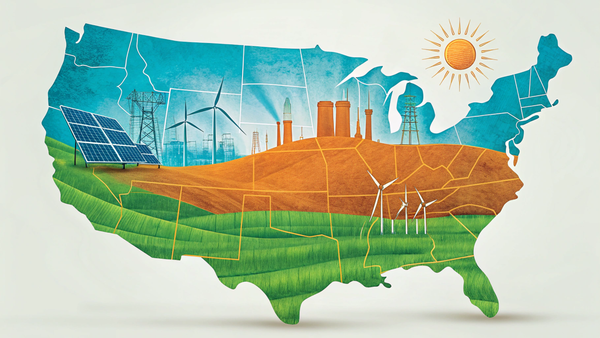Why Load Forecasting Must Evolve
The new electricity reality means that the era of passive energy planning is over. Here’s how we move forward.

We are entering an era where electricity demand is increasing in scope and unpredictability. For decades, electricity demand followed a predictable path: utilities relied on time-tested models that correlated economic activity, population growth, and historical consumption patterns to forecast energy needs. These models worked well in an era of stable, incremental demand growth.
But that era is over.
Today, we are experiencing an unprecedented transformation in energy consumption. The rapid electrification of transportation, heating, manufacturing, and new industries such as hydrogen production and data centers is driving demand at an unpredictable and accelerating pace. These so-called “new loads” don’t fit into traditional forecasting methods because they are driven less by economic cycles and more by technology adoption, policy mandates, and shifting industrial needs.
This isn’t just about adding more power generation—it’s about rethinking how we plan for, integrate, and manage electricity demand in a fundamentally different system. The old way of forecasting based on past trends is no longer enough. Instead, we must shift to proactive planning that prioritizes flexibility, resilience, and rapid infrastructure deployment.
Forecasting Blind Spots: Why Traditional Planning Fails
Utilities have historically relied on a top-down approach to energy planning: they analyze economic data, anticipate moderate growth, and adjust generation capacity accordingly. This works when demand follows predictable patterns. But today’s energy landscape is being reshaped by:
- Mass Electrification: Electric vehicles (EVs) and heat pumps are fundamentally changing residential and commercial power usage. A single new data center can demand as much power as 75,000 EVs—far beyond the incremental increases seen in past decades.
- Extreme Weather Volatility: As climate change accelerates, winter peak demand could outstrip summer peaks in some regions, requiring new reliability planning models. The recent cold snap in Texas showed how ill-prepared some grids are for such shifts.
- Flexibility vs. Inflexibility: Some new loads, such as EV charging, can be shifted to off-peak hours, reducing grid strain. Others, like data centers and industrial facilities, require constant, high-power loads that can’t be easily adjusted.
- Regulatory Uncertainty: Some states, like New York, have banned high-energy cryptocurrency operations, while others, like California, are fast-tracking electric vehicle infrastructure. These divergent policies mean that demand growth is no longer uniform, further complicating planning efforts.
The Consequences of Reactive Planning
If we continue to plan reactively—simply responding to demand after the fact—we risk a series of cascading failures:
- Grid Instability: Unplanned demand spikes from data centers, hydrogen production, and mass EV adoption could cause major reliability issues.
- Service Rationing: In a high-load growth environment, utilities may have to restrict or delay new connections, stalling economic growth.
- Rate Hikes: Expanding infrastructure reactively, rather than planning for it in advance, will lead to rushed, costly upgrades—raising electricity rates for consumers and businesses.
- Supply Expedience: If decisions are left too long, the opportunity for different supply options to satisfy this demand growth is lost. To meet demand in five years, it might be possible to develop a portfolio of renewables and storage to meet much of incremental demand. In three years, the only alternative may be hastily installed thermal generation.
Simply put, a passive approach will leave us playing catch-up, forcing higher costs and increased risks on the system. Instead, we need a forward-looking strategy.
What Proactive Planning Looks Like
Shifting from reactive to proactive planning requires an entirely different mindset. Instead of asking, “What do we think will happen?” we must ask, “What do we want to happen?” and then align infrastructure, markets, and policy to achieve it. Here’s what that looks like:
1. Integrated Generation and Load Planning
New large-scale electricity demands—such as industrial-scale hydrogen production or EV fleet charging hubs—should be planned in tandem with power generation and transmission upgrades. This means:
- Requiring utilities to integrate large-load forecasts into resource planning.
- Ensuring forecasts consider interconnection progress and align interconnection with overall market need
- Proactively providing information about existing interconnection capacity and planned expansion, and incentivizing loads by accelerating interconnection time at those substations such that load adjusts to planned infrastructure.
- Creating incentives for industrial customers to align energy-intensive operations with periods of excess renewable generation.
- Ensuring that regulatory approvals for new power generation happen in parallel with major new demand sources, rather than after the fact.
2. Flexible Market and Pricing Structures
Smart market design can ensure that new electricity demand enhances grid stability rather than exacerbating peak load issues. This means:
- Time-of-use pricing for EV charging and industrial loads to shift demand away from peak hours.
- Demand response programs where large electricity users adjust consumption based on grid conditions, which, for certain price-responsive loads, might allow them to alleviate strain on both transmission and generation.
3. Fast-Tracking Critical Infrastructure
Siting, permitting, and constructions delay remains one of the biggest barriers to modernizing the grid. We must:
- Streamline regulatory approvals for new transmission lines and high-voltage interconnections.
- Accelerate the siting and permitting of renewable energy projects near new demand centers.
- Encourage federal and state agencies to coordinate on cross-state transmission expansions.
4. Leveraging Data and AI for Better Load Forecasting
Traditional econometric models struggle with new demand patterns. We should:
- Invest in AI-driven forecasting models that incorporate real-time data on industrial growth, EV adoption, and weather variability.
- Require utilities to use scenario-based planning that accounts for high-load growth environments.
- Consider the shape of adoption curves by sector to understand the asymmetry of risk of under- or over-forecasting demand.
- Improve transparency in energy data collection to help policymakers and businesses make informed decisions.
5. Prioritizing Grid Resilience
With climate change creating new risks, energy planning must incorporate resilience measures:
- Include the known existing trend for expected cooling degree days and heating degree days instead of a single or group of historical years.
- Expand winter reliability planning for grids that traditionally focus on summer peak loads.
- Increase investment in grid-hardening measures to protect against extreme weather disruptions.
The Time to Act Is Now
The shift from a low-load growth to a high-load growth environment isn’t coming—it’s already here. Some utilities are already grappling with rapid demand surges from data centers and electrification, and the pace will only accelerate in the coming decade. The question isn’t whether we will adapt, but how quickly.
If we fail to act, we will face soaring electricity costs, reliability crises, and a scramble to retrofit a grid that was never designed for this kind of demand. But if we get it right—if we proactively plan for growth with a coordinated, flexible, and forward-looking approach—we can create an energy system that is more resilient, more efficient, and more sustainable.
The choice is ours. We can wait until the cracks in our system turn into crises, or we can take charge of our energy future today.
Where do we go from here?
Information Sharing and Collaboration: Proactive planning begins with enhanced information sharing among all stakeholders. This includes utilities, state and local energy offices, and various organizations involved in the energy transition. By creating open channels of communication, planners can better anticipate future load growth and coordinate infrastructure development.
Innovative Market and Tariff Design: Rethinking market structures and tariff designs is crucial to encourage flexible load operation. Incentives, markets, and policies should be designed to reward consumers and businesses that can shift their electricity usage to off-peak hours, thus mitigating the need for new infrastructure. This could involve time-of-use rates, demand response programs, and other mechanisms that promote efficient grid utilization.
Accelerated and Strategic Infrastructure Deployment: Streamlining the processes for permitting, siting, and reviewing infrastructure is essential for keeping pace with rapid load growth. Fast-tracking these procedures can reduce delays and ensure that necessary upgrades are completed in a timely manner. However, it's also important to ensure that infrastructure investments are future-proofed, meaning they are designed to accommodate future technological advancements and changing energy needs.
Integrated Planning Processes: Generation and load planning should happen concurrently, especially for large loads like datacenters. This integrated approach allows for a more coordinated and efficient deployment of resources, ensuring that new generation capacity is aligned with emerging demands.
Consideration of Public vs. Private Interests: States may need to balance public decarbonization goals with private sector interests, especially concerning large loads like datacenters. States might step in to restrict load growth or fast-track infrastructure expansion for preferred loads. Loads that pose risks to state decarbonization goals but are less sensitive to electricity prices might be leveraged to support decarbonization efforts.
Have a look through the original presentation here:





